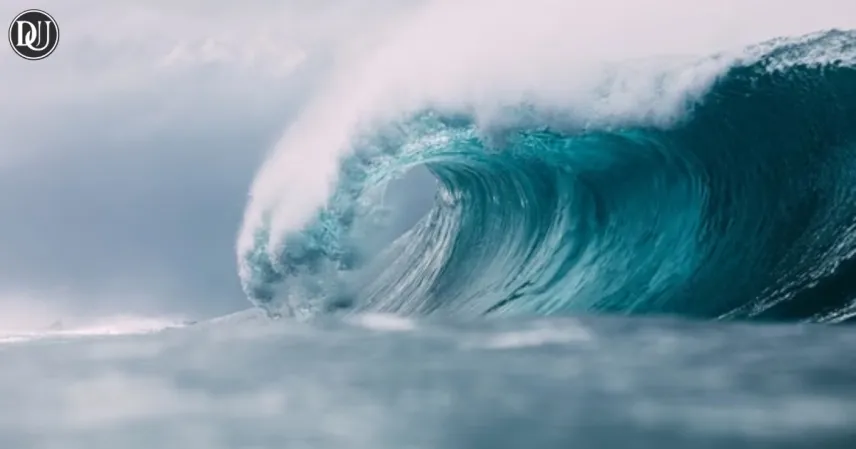A 7.3 magnitude earthquake near Sand Point, Alaska — that just popped into my head, like, can you even imagine that kind of ground shaking? Seriously, the thought of that magnitude rattling your entire world, then seeing a tsunami warning issued, is pretty unsettling. It happened a while back, but honestly, it makes you think about how quickly life can change for folks living on the coast up there. They had to evacuate people in some areas, which just shows how real the threat was. That immediate fear... it's just something else, I bet.
Seismic Activity: A Constant Threat 🌍
Alaska is no stranger to big quakes, you know? It sits right on the Ring of Fire, which is basically a giant horseshoe-shaped zone of intense seismic activity and volcanoes. This region accounts for most of the world's earthquakes and volcanic eruptions. So, a 7.3 tremor, while significant, isn't totally out of the ordinary for them. It’s wild to think about how some places just live with this constant geological energy under their feet. I mean, they’re practically built on a fault line. The one near Sand Point, it's part of the Aleutian Islands arc, where the Pacific Plate is constantly trying to slide under the North American Plate. That friction? It builds up, then boom, it releases, and you get these massive quakes.
Tsunami Warnings: The Immediate Aftermath 🚨
Issuing a tsunami warning after a quake like that is standard procedure, but it's also incredibly urgent. People living in coastal communities, especially those in vulnerable low-lying areas, have mere minutes sometimes to get to higher ground. The Pacific Tsunami Warning Center and the National Tsunami Warning Center, they're the ones who leap into action, analyzing the quake's characteristics and then putting out those alerts. It’s a race against time, really. I’ve noticed they've gotten really good at disseminating these warnings quickly through various channels – sirens, phone alerts, radio, you know. But still, the logistics of actually evacuating entire towns in the dark, potentially, is a huge undertaking. Could be wrong, but I imagine it’s terrifying, trying to get your family out safely while the ground is still settling.
Why Alaska? Plate Tectonics Explained 🏔️
The reason Alaska experiences so many of these seismic events, and consequently tsunami threats, comes down to fundamental plate tectonics. The Pacific Plate, which is one of the largest tectonic plates on Earth, is continually subducting, or diving beneath, the North American Plate along the Aleutian Trench. This process isn't smooth; it's jerky, creating immense pressure. When that pressure becomes too great, the plates slip, causing an earthquake. If this slip happens under the ocean, especially if it vertically displaces a large column of water, that's when a tsunami can get generated. It’s basically nature’s massive displacement wave. It's quite fascinating, honestly, how these gigantic landmasses are constantly moving and reshaping our planet.
Living on the Edge: Alaskan Resilience 🏠
You’ve got to admire the resilience of people who choose to live in places like Alaska. They understand the risks, I guess. It’s part of the deal. They build their homes and infrastructure to withstand these tremors as much as possible. I mean, they’ve adapted their entire way of life to this environment. The communities there, they often have emergency plans in place, designated evacuation routes, and regular drills. It's a stark reminder that while we can build impressive cities, nature still holds the ultimate power. And I think they know that, deeply. It's not about fighting nature, it's about learning to live with its immense, unpredictable force.
The Science of Tsunami Waves 🌊
Thinking about the actual wave itself, it's not like the typical crashing surf you see at the beach, you know? In deep water, a tsunami is just a barely noticeable ripple, maybe a foot high, but it's incredibly long, sometimes hundreds of miles from crest to crest, traveling at jet-plane speeds—like 500 mph or more. But as it approaches shallower coastal waters, all that energy and water gets compressed. The wave slows down, but its height dramatically increases. That's when it transforms into a devastating wall of water that can inundate vast areas, carrying immense debris. It’s not just water; it’s a debris field, basically. That's why even a small tsunami warning needs to be taken seriously.
Preparedness and Future Outlook 💡
The constant threat means preparedness is paramount. Beyond the immediate warning systems, there's long-term planning involving coastal land-use regulations, education for residents, and building codes. The goal is to minimize damage and loss of life when, not if, the next big one hits. I’m not 100% sure about the specific recovery efforts after the Sand Point event, but generally, communities rally pretty quickly. They have to. It's a cyclical thing in that part of the world. And it makes me think about how critical it is for everyone, everywhere, to understand local risks, even if it's not a tsunami. Natural disasters, they don’t discriminate, do they? It’s just, you know, a constant reminder of how wild our planet really is. Anyway, just needed to get that off my chest at 2 AM.
Read more:-
New Jersey Flooding: A State of Emergency & Its Impact










